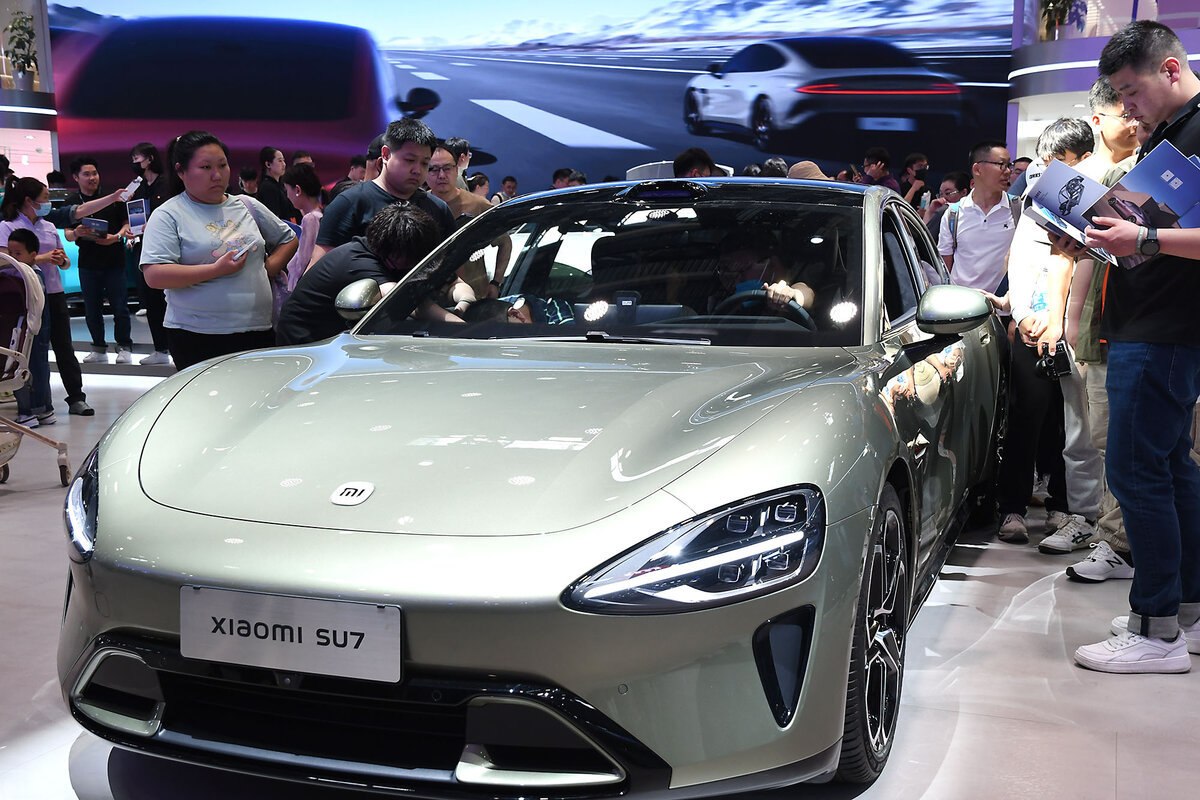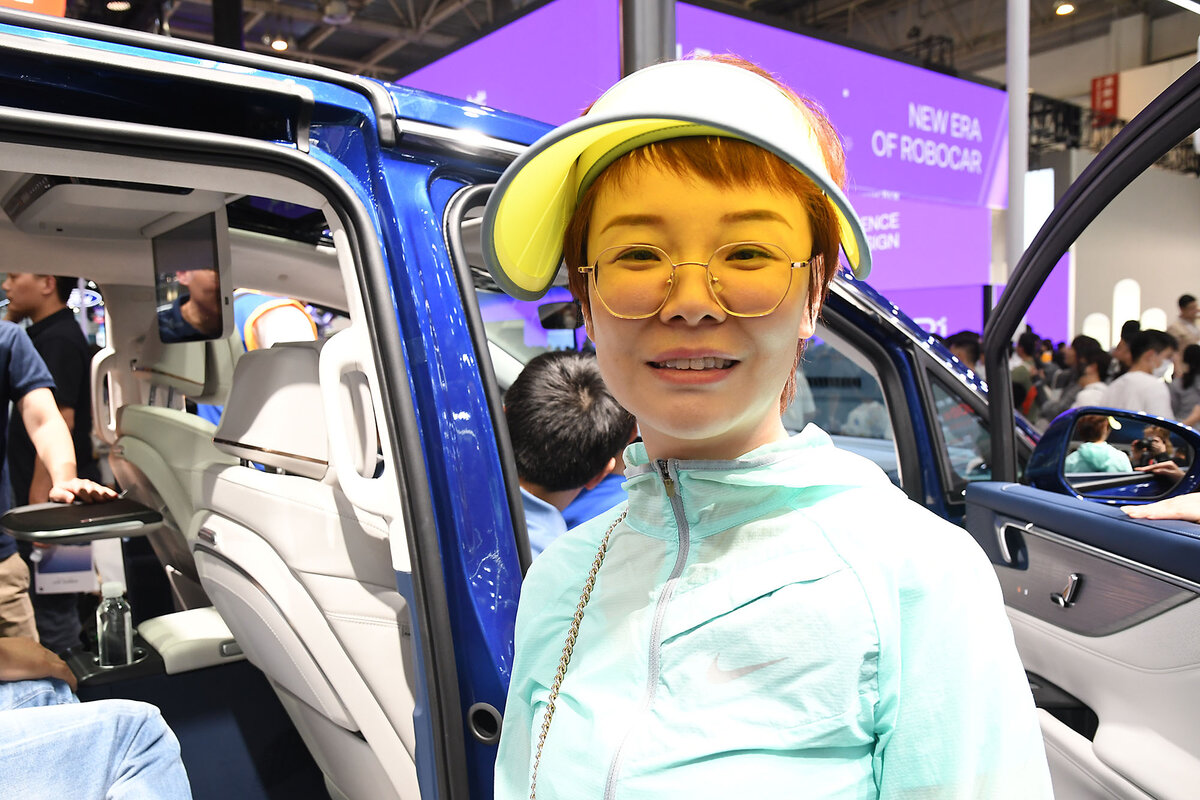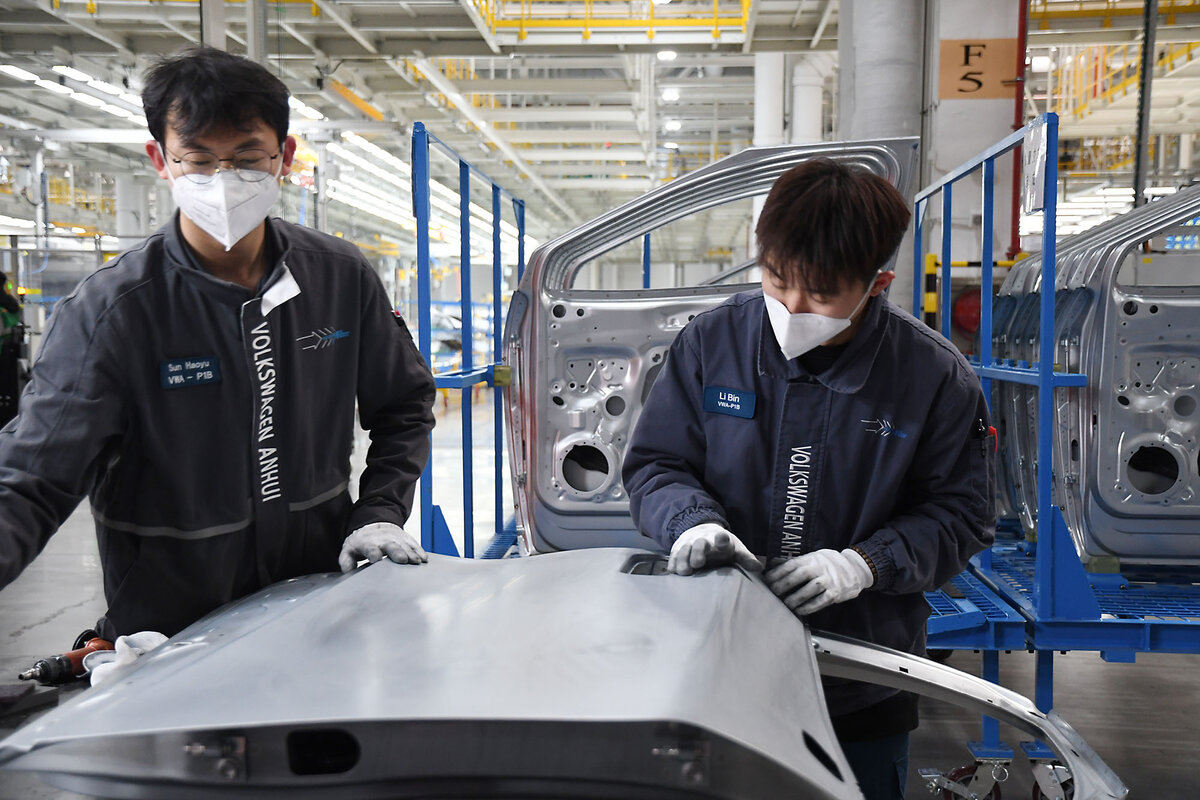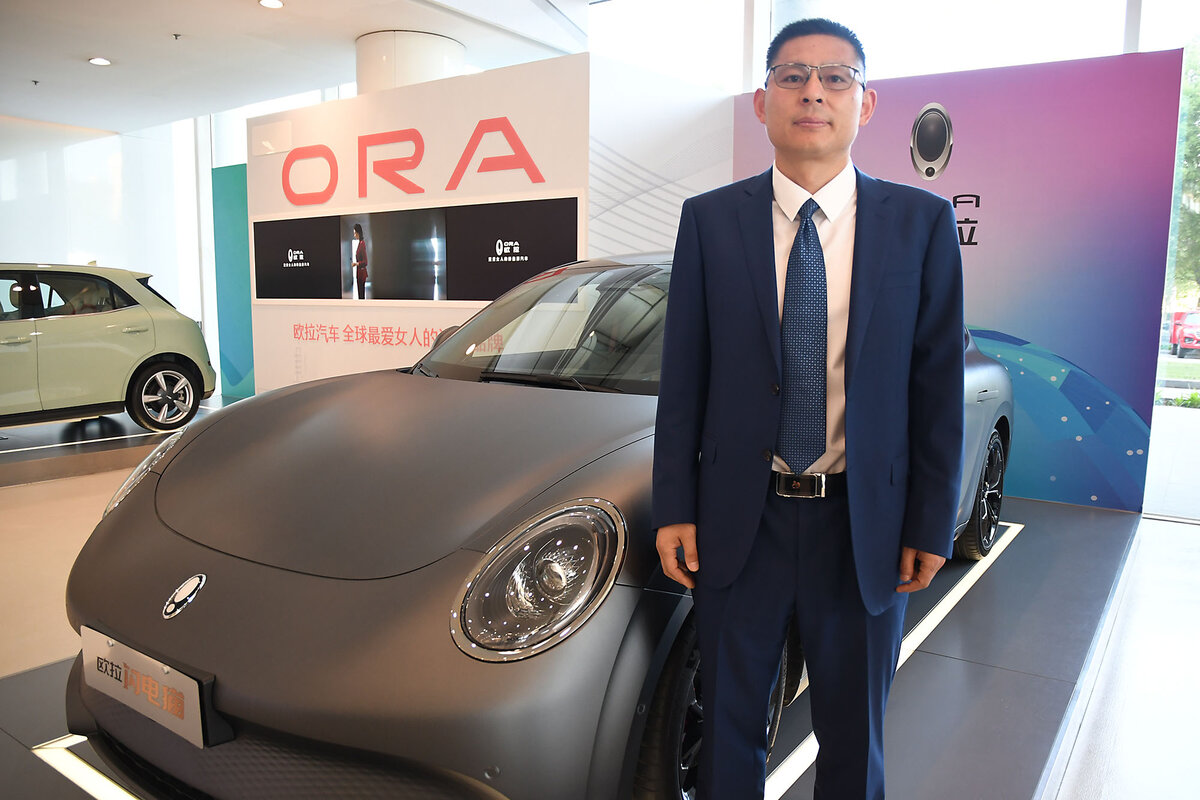How China’s tech-forward EVs are dominating the industry
Loading...
| Beijing
Chinese car enthusiasts thronging to Beijing’s glitzy auto show – the country’s largest – had hundreds of sleek high-tech electric vehicles to explore last week from both foreign and domestic brands.
But as the crowds flocked to see the latest models, from the bestselling BYD Seagull to the sporty and digitally connected Xiaomi SU7, enthusiasm over China’s homegrown EVs was unmistakable.
“Smart cars produced in China are relatively advanced now,” says Ying Cheng, a Beijing company worker shopping for a family car. “I’m interested in cars with more AI.”
Why We Wrote This
A story focused onChina’s booming electric vehicle industry is sparking concern among foreign automakers, as they watch their market shares in China decline and brace for a flood of Chinese EVs in their home countries. Could this tension benefit consumers?
Mr. Ying isn’t considering any foreign brands, he says, because “their driving technology systems are relatively backward.”
China has rapidly emerged as the world’s biggest EV market, accounting for about 60% of global sales in 2023, compared with 25% in Europe and 10% in the United States, according to the International Energy Agency. Last year, Chinese consumers bought more than 8 million EVs, up 35% from 2022, and EVs are expected to make up 50% of all car sales in China by 2030.
Domestic EV-makers are increasingly dominating the Chinese market while also racing to expand exports around the world. China’s EV exports shot up 77% last year, to 1.2 million cars, according to official data. Shenzhen-based BYD is now the world’s second-ranked seller of battery electric vehicles, after Tesla.
The success of Chinese EV-makers is sparking concern over a potential flood of inexpensive Chinese EVs to the U.S. and Europe – including in France, where Chinese leader Xi Jinping began his first trip to Europe in five years on Monday. Seeking to head off a trade war, Mr. Xi told French President Emmanuel Macron and European Commission President Ursula von der Leyen that China’s vast output of new energy products – such as solar panels, batteries, and EVs – alleviates inflation and contributes to the green transition, a global push for more sustainable policies.
“The so-called ‘problem of China’s overcapacity’ does not exist, either from the perspective of comparative advantage or in light of global demand,” Mr. Xi said, according to an official Chinese statement on his remarks. China and Europe should “address economic and trade frictions through dialogue,” he said.
What Chinese buyers look for
Chinese EVs are gaining appeal as they become more technologically advanced, better designed, and equipped with stronger batteries that charge faster – all while becoming more affordable. The popular BYD Seagull, for example, starts at less than 70,000 RMB ($10,000).
American brands such as Buick still enjoy a good reputation in China for safety and quality. But to thrive in the dynamic Chinese market, they will have to win over increasingly picky customers like Jia Yuzhen.
“I look for color and appearance, accessories and decor that are refined and high-end,” says Ms. Jia, a Beijing business owner, as she hops into the newly unveiled royal-blue Buick luxury van. She adds that seat comfort, safety, and “driving feel” are also key.
“Overall,” she says of the nearly $70,000 plug-in hybrid, “it’s pretty good.”
In a sprawling new plant in China’s southern Anhui province, armies of orange robotic arms twist, whir, and clank, producing Volkswagen’s latest EVs for the Chinese market.
The high-tech facility, which began operations late last year, is a critical hub for speeding to market smart EVs as part of the German brand’s “In China, for China” strategy. It aims to sell 1.5 million EVs in China per year.
“Chinese customers are different,” says Volkswagen (Anhui) Automotive Co. CEO Erwin Gabardi, noting that most are young, first-time buyers who want modern designs, connectivity, assisted driving, and in-car entertainment. “They want to maybe stay in the car for 30 minutes and do some meditation ... or do KTV [karaoke] songs together while they are driving.”
To innovate and advance in China’s ultracompetitive market, Volkswagen and other foreign car companies are increasingly partnering not only with local EV manufacturers but also with Chinese tech companies. Tesla last month won Beijing’s approval to launch its autonomous driving software in China using navigation provided by Baidu, the big Chinese search engine firm. And Toyota is working with the Chinese social media giant Tencent on integrating artificial intelligence and cloud computing in EVs.
Volkswagen, which has long dominated the Chinese car market, has seen its share shrink in recent years. It’s teamed up with Chinese firms making software, AI, and high-tech EVs to try to regain ground.
“Volkswagen wants to remain the No. 1 international OEM [original equipment manufacturer] in this country,” says Dr. Gabardi.
Yet whether foreign auto companies can fend off the onslaught of Chinese-made EVs is an open question.
Where China sends its excess cars
Chinese EV-makers are working hard to expand sales overseas – a necessity as the domestic market is not big enough to absorb the country’s massive EV production capacity.
At Great Wall Motor Co. in Baoding, Hebei province, Liu Huaxue, GWM’s vice president for operations, shows off a silver Ora “Lightning Cat” EV, the company’s new fully electric sedan marketed for China, other parts of Asia, and Europe.
“We want to expand everywhere,” says Mr. Liu.
China’s government channeled an estimated $139 billion in subsidies and other support for the domestic EV sector from 2009 to 2021, part of an expansive industrial policy aimed at dominating key technologies, according to research by Scott Kennedy at the Center for Strategic and International Studies in Washington.
That policy gave Chinese EV-makers a big lead over foreign rivals. But it also led to market distortions and inefficiency – spurring enormous overcapacity by a crowded field of some 200 producers – causing an ongoing price war that has slashed EV prices since 2022.
It’s a major source of rising trade friction with the U.S. and the European Union, which last October launched an antisubsidy investigation into Chinese EV firms. Both Brussels and Washington are weighing new tariffs aimed at preventing an influx of cheap Chinese EVs, which are already subject to a 25% tariff in the U.S.
Yet keeping out the Chinese EVs could also slow needed innovation by U.S. and European EV producers, while hurting consumers in those markets, says Dr. Kennedy.
Beijing has cast Western countries’ concerns as veiled protectionism and in February mobilized government ministries to help China’s EV-makers fight foreign restrictions.
GWM’s Mr. Liu sees potential Western tariffs as “a big challenge.”
Like other Chinese EV-makers, he says GWM is looking at building new production facilities outside of China to avoid the tariffs. “In the future, we can build a local plant in Europe,” he says. “That’s about the only option.”
Indeed, as Mr. Xi began his trip to Europe, French Finance Minister Bruno Le Maire told reporters that BYD would be welcome to open a factory in France. But both Mr. Macron and Ms. von der Leyen stressed to Mr. Xi that Europe seeks fair trade with reciprocal market access.
Europe “will not waiver from making tough decisions needed to protect its economy and security,” Ms. von der Leyen said after the meeting, according to The Associated Press.
Editor’s note: This story has been updated to correct the estimated subsidies the Chinese government gave to the EV sector.










